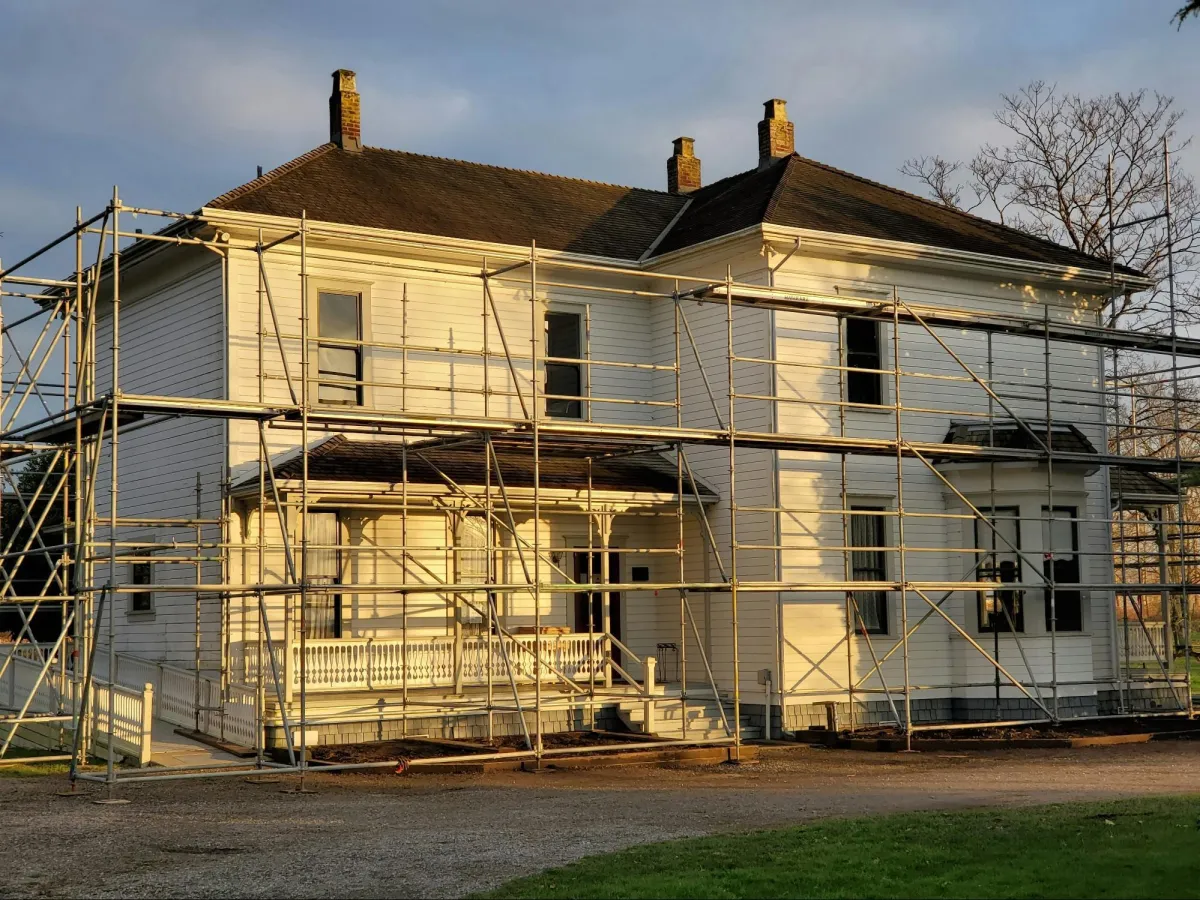
Understanding The Hidden Costs of Custom Home Building
Building a custom home can lead to unexpected expenses that impact buyers' quality of life. Many assume that the initial price covers everything, but hidden costs can quickly add up. This article explores the complexity of contract terms, financing considerations, and long-term costs beyond construction. By understanding these factors, readers will learn how to manage their budget better and avoid surprises during the building process. Navigating the supply chain efficiently and knowing what to anticipate can help ensure a smoother home-building experience.
Key Takeaways
Hidden costs can significantly affect the overall budget of a custom home build
Planning for site preparation expenses is essential to avoid unexpected fees
Understanding permit and inspection fees helps ensure a smoother construction experience
A contingency fund is vital for managing unforeseen expenses during the building process
Consulting with experts can reveal hidden costs and support effective budgeting strategies
Understanding the Hidden Costs of Custom Home Building

Hidden expenses are an important part of custom home construction that buyers often overlook. This section will identify common hidden costs such as site preparation, permit and inspection fees, and utility connection charges. It will also address the risk of unexpected changes during construction, ensuring buyers are well-prepared as they navigate through their contracts.
Identifying Common Hidden Expenses
Understanding common hidden expenses is crucial when building a custom home, as costs can quickly accumulate. Buyers should be aware of fees for real estate appraisals, site preparation, and utility installations, alongside potential extra charges for irrigation systems. Additionally, thoroughly reviewing warranty details can help avoid unexpected surprises that may waste time and resources after construction.
Assessing Site Preparation Costs
Assessing site preparation costs is crucial for anyone engaging in home construction. These costs can encompass clearing the land, grading, and ensuring proper drainage, which may not be immediately evident in the initial estimates. Homebuyers should consult their contractor about these expenses early on, as unanticipated fees can arise, especially if a homeowner association imposes additional landscaping requirements, like specific window coverings or setbacks from property lines. Understanding these aspects can help homeowners better manage their budget and avoid confusion later in the building process.
Evaluating Permit and Inspection Fees
Understanding permit and inspection fees is essential when considering a custom home build. Local authorities often require these fees to ensure that building standards are met, particularly in areas like home automation and interior design. Buyers should factor in these costs early in the planning process, as they can significantly impact the overall budget if not accounted for, ensuring a smoother and more manageable construction experience.
Recognizing Utility Connection Charges
Recognizing utility connection charges is essential for buyers planning a custom home. These charges relate to linking the property to essential services, such as electricity, water, and gas. Buyers should check local building codes and explore options available from different utility providers to maximize efficiency and minimize costs. Understanding these expenses early can help buyers better plan their budget and avoid surprises during the building process.
Planning for Unexpected Changes
Planning for unexpected changes during custom home building is vital for staying within budget. Buyers should expect possible alterations in design due to energy efficiency upgrades or unforeseen procurement delays. Setting aside a portion of the mortgage budget for remodeling or adjustment costs can prepare homeowners for these situations, ensuring a smoother construction experience and reducing the stress associated with surprises.
The Role of Contract Terms in Cost Management

Understanding contract terms is key for managing costs when constructing a custom home. Buyers should analyze fixed versus variable costs, recognize allowances in custom home contracts, and evaluate change order implications. A well-defined scope of work is essential to avoid unexpected expenses. These factors help buyers work efficiently with custom home builders and keep their budgets in check.
Analyzing Fixed vs. Variable Costs
When building a custom home, it's important to be aware of common hidden expenses, as costs can add up quickly. Buyers should consider fees for real estate appraisals, site preparation for land clearing, and utility installations for water, electricity, and gas. Additionally, expenses related to irrigation systems may arise, potentially inflating the final price. A comprehensive review of warranty details is also essential to prevent unexpected issues after construction that could consume time and resources.
Understanding Allowances in Custom Home Contracts
Understanding allowances in custom home contracts is crucial to managing costs effectively. These allowances set a budget for specific areas, such as lighting fixtures or fencing materials, ensuring transparency and avoiding unexpected expenses later on. Clear communication with the builder about these allowances helps buyers take ownership of their choices, aligning their preferences with the overall budget.
Clarify allowances for features like lighting and fencing.
Ensure inspection processes are covered under the contract.
Maintain open communication with builders regarding adjustments.
Be aware of how allowances might affect overall ownership costs.
Evaluating Change Order Implications
Evaluating change order implications is essential for homeowners during the custom building process. These changes often arise concerning the driveway layout or drainage system, significantly impacting costs and timelines. Homebuyers should review how change orders affect their insurance policy and overall budget, as unplanned adjustments in soil conditions or other factors can lead to unexpected expenses. Clear communication with builders about potential changes can help manage these situations effectively and keep the project on track.
Importance of a Well-Defined Scope of Work
A well-defined scope of work is essential in the custom home build process to prevent misunderstandings and manage costs effectively. Buyers should pay special attention to details such as zoning regulations, bathroom designs, and overall project expectations to avoid unexpected expenses. Understanding these components not only streamlines communication with the builder but also ensures that all parties are aligned on the project's goals and requirements:
Clarify project details, including zoning and design preferences.
Ensure all aspects of the home build are included in the initial agreement.
Discuss specific features like bathrooms and other essential areas.
Maintain open lines of communication to address any changes or questions.
Financing Considerations and Their Hidden Costs

Interest rate fluctuations can significantly affect the overall cost of custom home building, impacting long-term financing. Buyers should be aware of hidden fees associated with home loans, which can increase the financial burden. Additionally, understanding insurance costs—particularly regarding policies for potential water damage—can help manage unexpected expenses during construction. Each of these areas is crucial for effective budgeting and planning.
Interest Rate Fluctuations and Their Impact
Interest rate fluctuations can be a significant expense when building a custom home and affect the overall budget. A small change in interest rates can lead to higher monthly payments, which may require buyers to adjust their floor plan or allocate funds from their contingency fund. Awareness of these potential shifts can help homebuyers plan better and choose a custom home builder who offers guidance on financing options that suit their needs.
Hidden Fees in Home Loans
Hidden fees in home loans can lead to unexpected costs during the custom home building process. These fees may include charges for underwriting, loan processing, and even title insurance. Buyers should carefully review their loan agreement and ask their lender for a detailed breakdown to avoid surprise expenses, ensuring they have enough budget for essentials like lumber and concrete for their project. Keeping track of these details can help homeowners allocate funds effectively for landscaping and other important aspects of their new home. Providing an email address for clear communication with lenders can also help clarify any uncertainties regarding potential costs.
Insurance Costs During Home Building
Insurance costs during home building are an essential factor for buyers to consider. This includes the standard homeowner's insurance and coverage for potential water damage or construction-related accidents. Reviewing various policy options provides insights into the right coverage needed to protect the investment during the custom home building process:
Understand different types of insurance policies available for new builds.
Evaluate coverage for construction-related risks, including weather or accidents.
Compare quotes from different insurance providers for cost efficiency.
Navigating Seasonal and Market Variations

Navigating seasonal and market variations can significantly influence the overall costs of custom home building. Understanding seasonal labor costs helps buyers predict potential changes in hiring expenses. Supply chain issues can lead to unexpected increases in material costs, while economic factors may further affect pricing. Each element is crucial for effective budgeting and planning in the custom home-building process.
Understanding Seasonal Labor Costs
Understanding seasonal labor costs is crucial for buyers during the custom home building process, as wages can fluctuate significantly throughout the year, especially in regions with extreme weather. In spring, increased demand tends to drive labor costs higher, while summer sees the highest costs due to a surge in ongoing projects. Conversely, fall often brings a decrease in demand, resulting in lower labor expenses, and winter typically offers reduced wages because of low demand, though potential weather delays can affect timelines. Buyers should consult with builders to navigate these seasonal variations and secure competitive rates year-round.
Cost Implications of Supply Chain Issues
Supply chain issues can significantly affect the cost of custom home building, leading to unexpected price increases for materials and delays in construction timelines. For instance, if a key material like lumber becomes scarce due to market fluctuations, builders may pass those costs onto buyers, straining their budgets. To mitigate these impacts, it is wise for homebuyers to stay informed about market trends and discuss alternative materials or strategies with their builders, ensuring a smoother and more cost-effective building experience.
Anticipating Economic Factors Affecting Prices
Anticipating economic factors that affect prices is crucial for buyers during the custom home building journey. Economic changes, such as inflation or shifts in demand, can lead to heightened costs for materials and labor. Homebuyers should stay informed about these trends and consider working closely with their builders to make decisions that align with current market conditions, ensuring their budget remains intact.
Evaluating Long-Term Costs Beyond Construction

Potential homeowners should consider long-term costs beyond the initial construction of their custom home. Regular maintenance and repair expenses are inevitable and should be factored into budgeting. Additionally, landscaping and outdoor features can add significant value but come with their own costs. Buyers must also consider future renovations as their needs change over time.
Maintenance and Repair Expenses
Maintenance and repair expenses are important considerations for anyone building a custom home. After the initial construction, homeowners should anticipate ongoing costs to keep their property in good condition, such as roofing repairs, paint touch-ups, and HVAC servicing. Regular maintenance not only preserves the value of the home but can prevent larger issues and costs in the future:
Plan for regular upkeep to avoid costly repairs.
Budget for seasonal maintenance tasks like gutter cleaning.
Consider hiring professionals for specialized repairs to ensure quality work.
Landscaping and Outdoor Features
Landscaping and outdoor features are crucial for enhancing the beauty and value of a custom home, but they can also introduce significant long-term costs. Homeowners should plan for expenses related to planting trees, installing patios, or building fences, as these elements require ongoing maintenance and potential repairs. Buyers can ensure their outdoor spaces remain inviting and functional over time by budgeting for these landscaping needs early in the process.
Future Renovation Considerations
Future renovation considerations are significant in the long-term cost of custom home building. Homeowners should consider possible upgrades needed as family needs change, such as additional bedrooms or updated kitchens. Planning ahead for these renovations can help ensure that future budgets are realistic and that potential changes don’t lead to financial strain later on.
Conclusion
Uncovering the hidden costs of custom home building is crucial for every buyer. Awareness of expenses related to site preparation, permits, and utility connections helps prevent unexpected financial strains. Establishing a comprehensive budget and creating a contingency fund empowers buyers to manage risks effectively. By understanding these factors, homeowners can confidently navigate the building process and ensure their dream home aligns with their financial plans.


